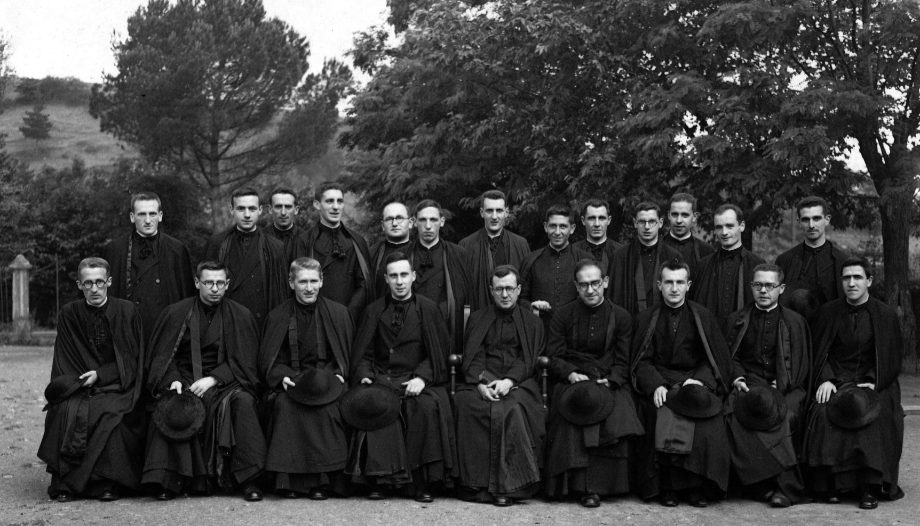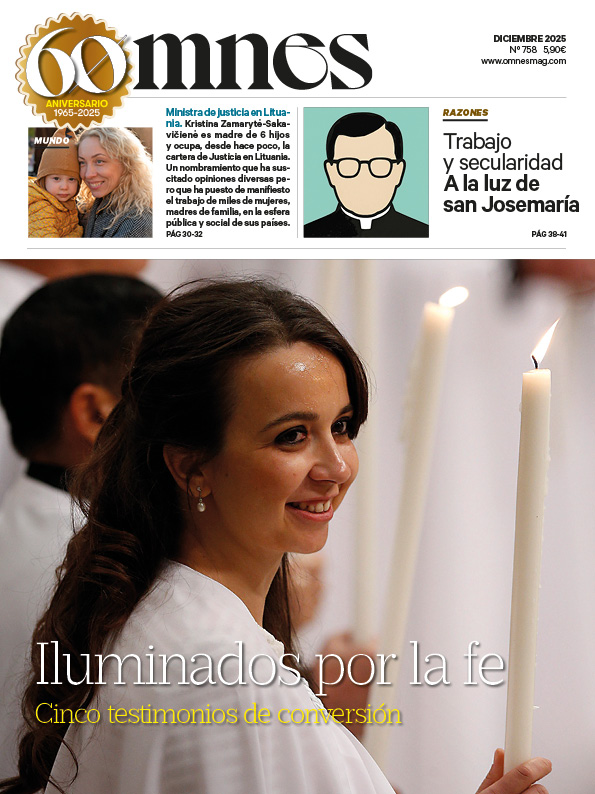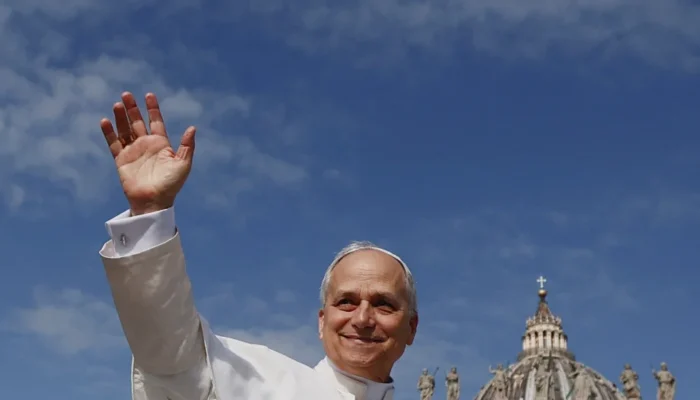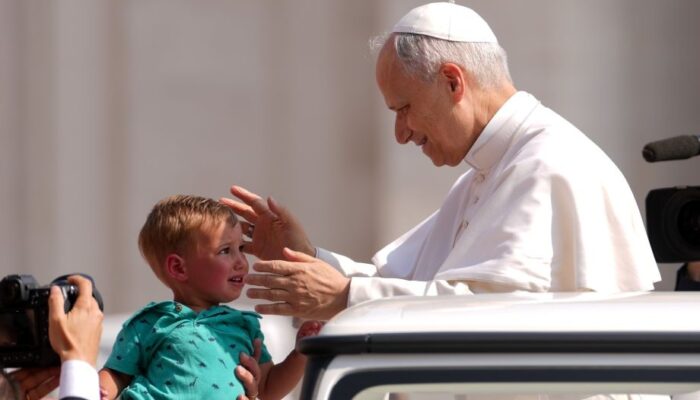Santiago Martínez Sánchez, professor of history at the University of Navarra and director of the University's Josemaría Escrivá Study Center, has carried out a truly exhaustive study of the early years of the Priestly Society of the Holy Cross, from October 2, 1928, when St. Josemaría Escrivá was born. Josemaría Escrivá de Balaguer (1902-1975) founded Opus Dei until the conclusion of the Second Vatican Council on December 8, 1965.
The first thing that this in-depth investigation shows is that Opus Dei's work with diocesan priests throughout the world was, from the very beginning of St. Josemaría's priestly life, a true "dominant passion. That is to say, that God's will for him to work in the formation of the secular clergy, their spiritual support, their preparation to work in the orders of the Ordinaries of the places and, finally, in the building of united and vibrant priestly presbyteries, was already in St. Josemaría's heart from his time as a seminarian in Saragossa and would remain so until his death in Rome.
The legal configuration
The legal history of the Priestly Society of the Holy CrossIt responds to God's will and will cross all the juridical circumstances of Church law from the Code of Canon Law of 1917 to that of 1984 and of the history of the Church and theology from the twentieth century to the present. Both tributaries converged in 1982 in the Apostolic Constitution "Ut Sit" and its juridical formulation in the Bull "Ut Sit" of March 19, 1983, with which the charism of the Prelature of Opus Dei and the Priestly Society of the Holy Cross has been formulated inseparably united. This juridical formula contains the foundational elements and safeguards them by law.
The fundamental core of this work will consist in explaining how this will of God was carried out: that Opus Dei should work with diocesan priests in full communion with the bishops of the whole world, promoting the full identification of these priests with their Ordinaries and with the priests of the diocesan presbyterate, converting the priestly task entrusted to it by the Ordinaries of each place as a matter to be sanctified (17, 44, 456, 461).
Serving priests
It is well known, and the study we now present explains it in great detail, the moment when St. Josemaría, when he was about to proceed to request Pontifical approval of Opus Dei, then as a Secular Institute, faced with the difficulties he encountered in explaining what would become the Priestly Society of the Holy Cross, was determined to abandon the Work to found an Association for priests throughout the world and promote the pursuit of holiness in the ministry.
Just as God confirmed to him the presence of women in Opus Dei, he also made him see that "diocesan priests had a place" without diminishing his love for the diocese, nor double obedience, nor division in the presbyterate. with a lay and diocesan mentality among the other members of the Work (258). It is convenient to read this chapter slowly because it provides documentation of great interest (280-281).
Precisely, the best conclusion of this extensive and solid work of research is to highlight the supernatural nature of the Priestly Society of the Holy Cross and the fruits of holiness, of union with the bishops of each diocese and among the members of the priestly presbyterate. Obviously, St. Josemaría always asked priests who wished to acquire formation and spiritual direction in this institution to show that they had received a divine vocation and a desire to allow themselves to be helped and to be in communion of prayer with the bishop and with the Father of this spiritual family.
Context
Likewise, the author has tried to approach the mentality about clerical associations that some prelates, their diocesan curias and seminary formators had in the forties, fifties and sixties. This is necessary to understand why some bishops did not fully grasp the freedom of a priest to join the Priestly Society of the Holy Cross, just as they would not later understand the changes that young people demanded after the revolution of 1968. In short, the dialogue with the contemporary world that the Second Vatican Council brought about in order to be able to work better in the contemporary world.
It is also important to read the first chapters to learn a little about the rural world, so different from the present, indeed, almost disappeared ("con la gente se va el cura" p. 153), because without these historical coordinates we cannot understand the pedagogical system of the diocesan seminaries and the intellectual formation that was given to them. 153), because without these historical coordinates one cannot understand the pedagogical system of the diocesan seminaries and the intellectual formation that was given to them, since most of those boys would arrive at the capital of the region or province, if they stood out a lot, with a very mature age, a long experience and after many years of reading and personal study that would enable them to finish their days working in parishes with families and parishioners that required a little higher level.
The only problem of this interesting study lies in its great length, because when one reaches the ninth chapter, which is the most interesting: "Diocesan history of the Priestly Society of the Holy Cross" (539-626), one has already had to read many previous questions. Logically, it is a difficult problem because it is also important to base well the previous questions to be able to understand the facts. It is true that the elaborate graphs make it much easier to understand the issues. Finally, we must emphasize the high spiritual level of those priests (306).
Undoubtedly, the hope that the next volume will be published, the one that will show how the Priestly Society of the Holy Cross will truly survive the tremendous onslaught of the phenomenon of contestation and the identity crises that occurred in many places in Spain. It will also show the intense work of the Priests of the Priestly Society of the Holy Cross to discover many vocations for the seminaries and to collaborate with the authorities of the seminaries and the bishops so that many vocations were born who today are, together with their companions, the hope and the future of the Church in Spain (422).
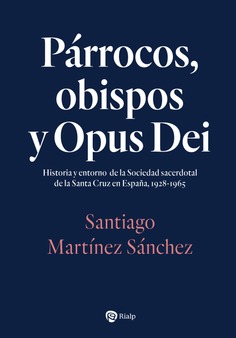
Santiago Martínez Sánchez, Párrocos, obispos y Opus Dei. Historia y entorno de la Sociedad Sacerdotal de la Santa Cruz en España, 1928-1965, Rialp, Madrid 2025, 702 pp.


